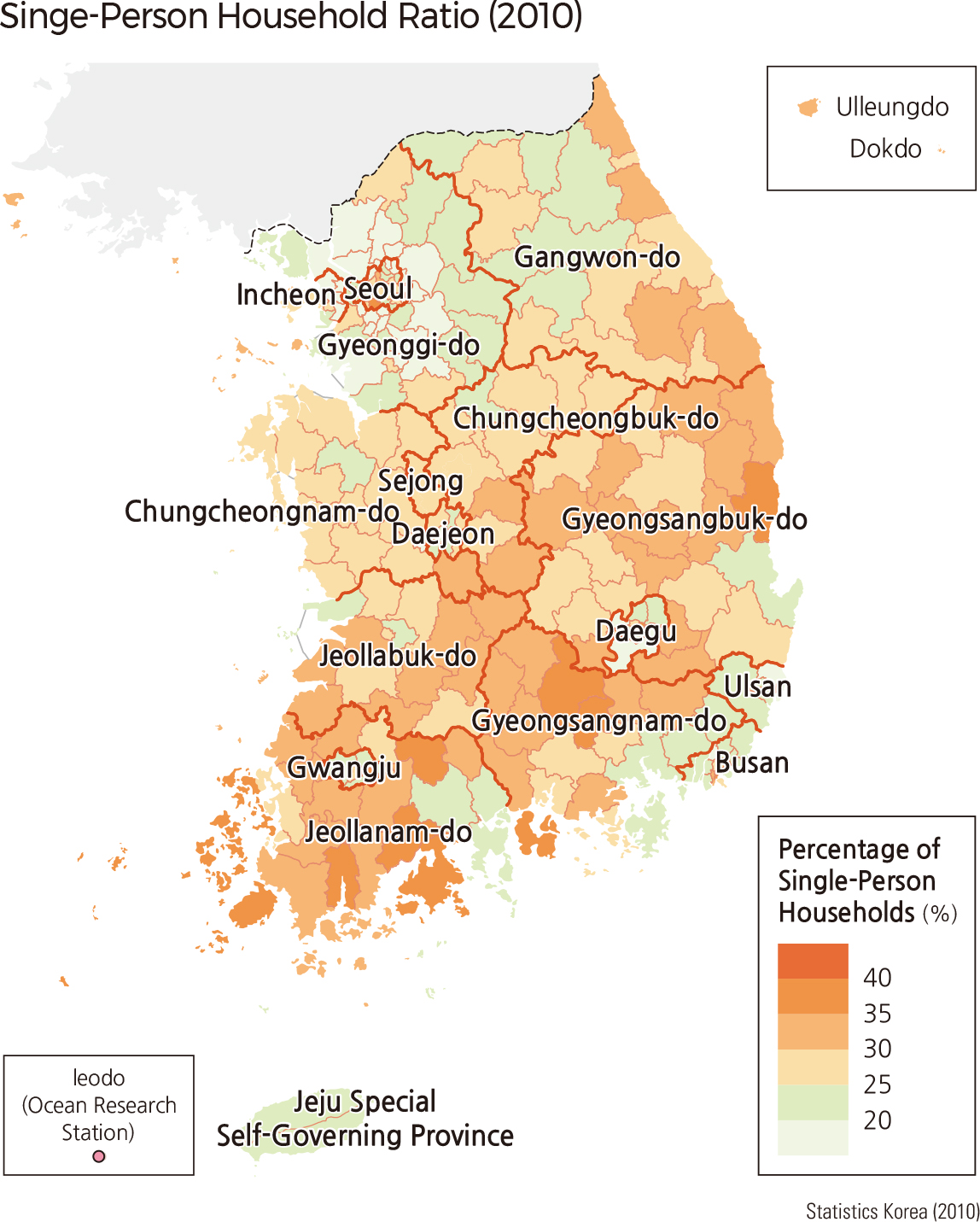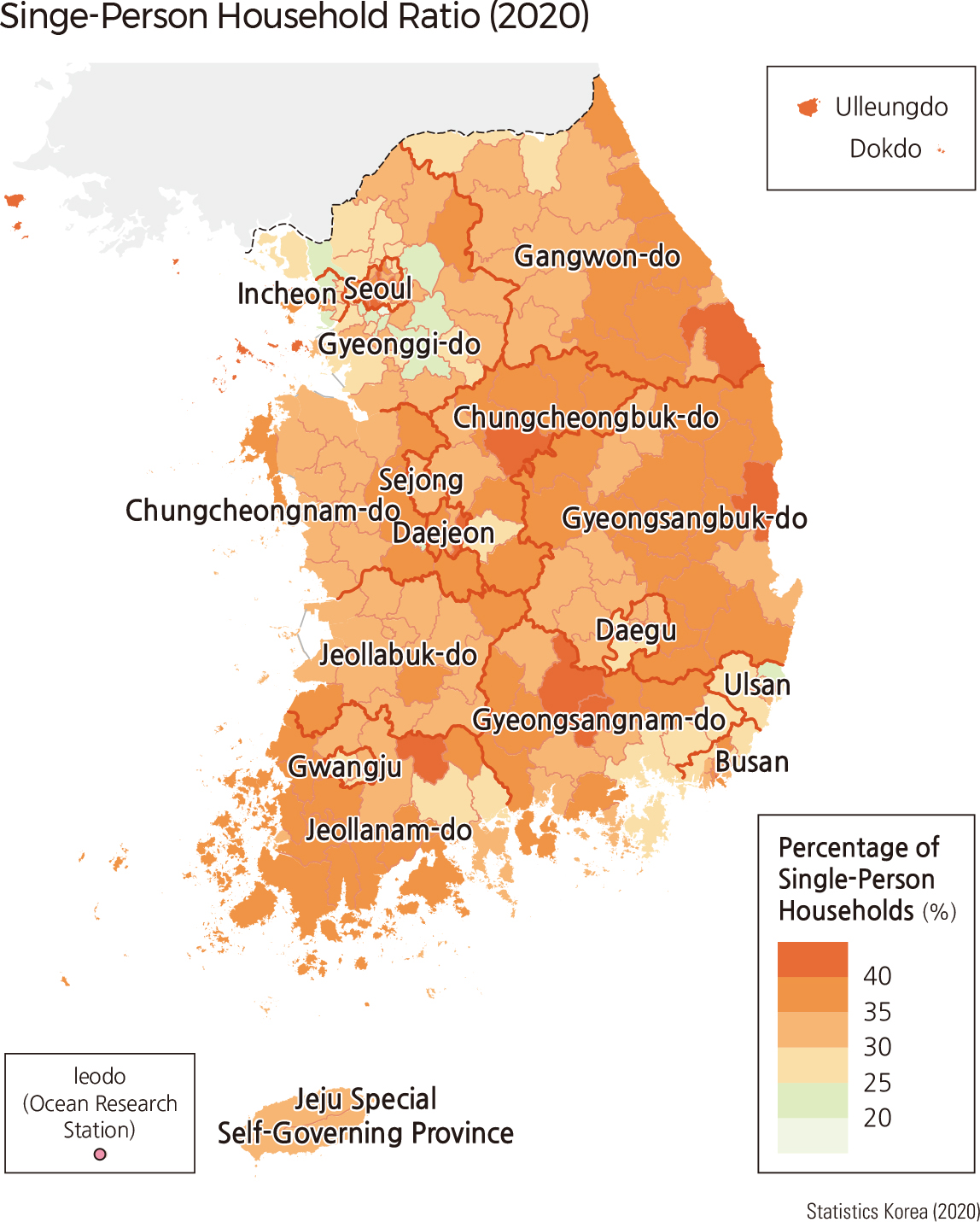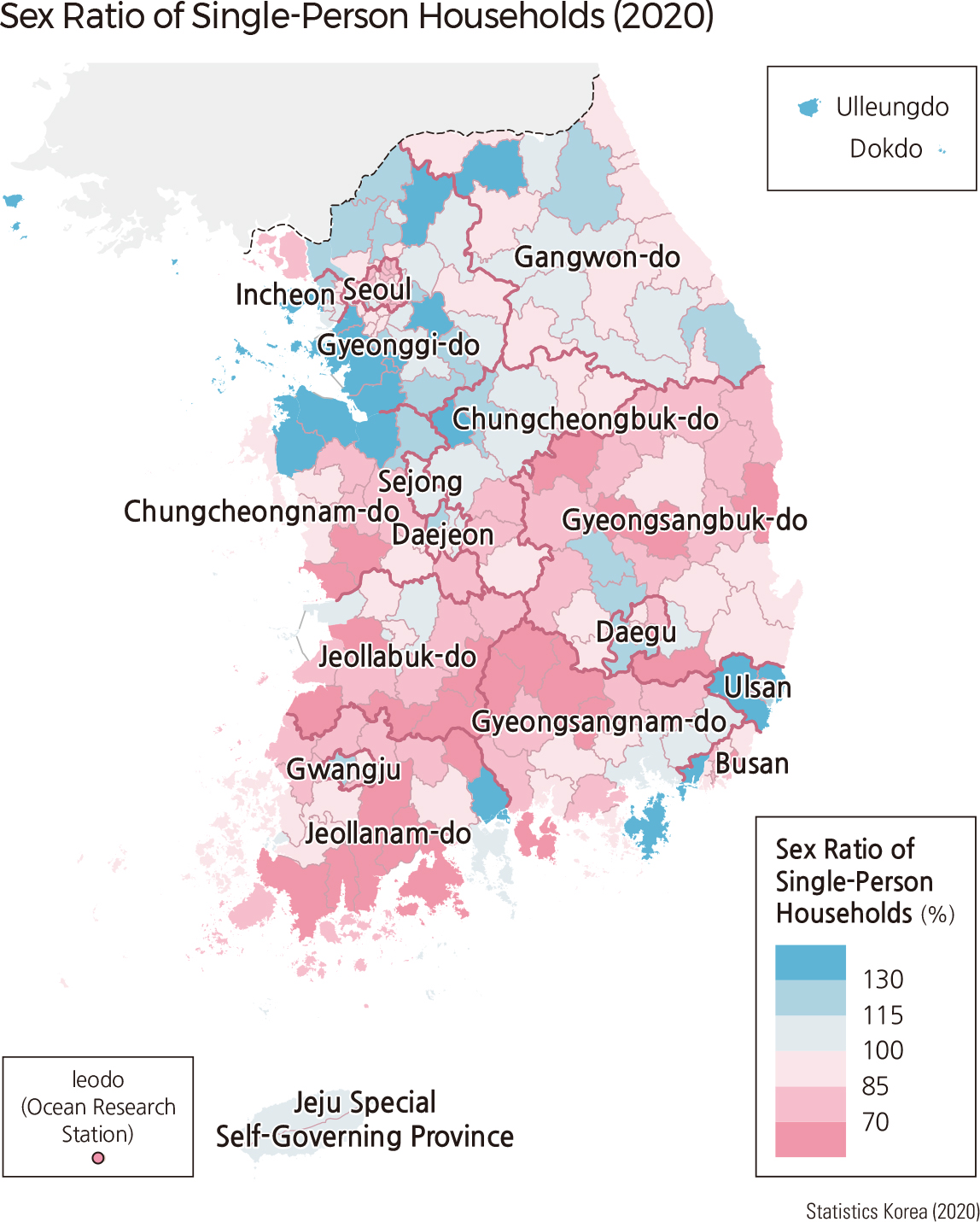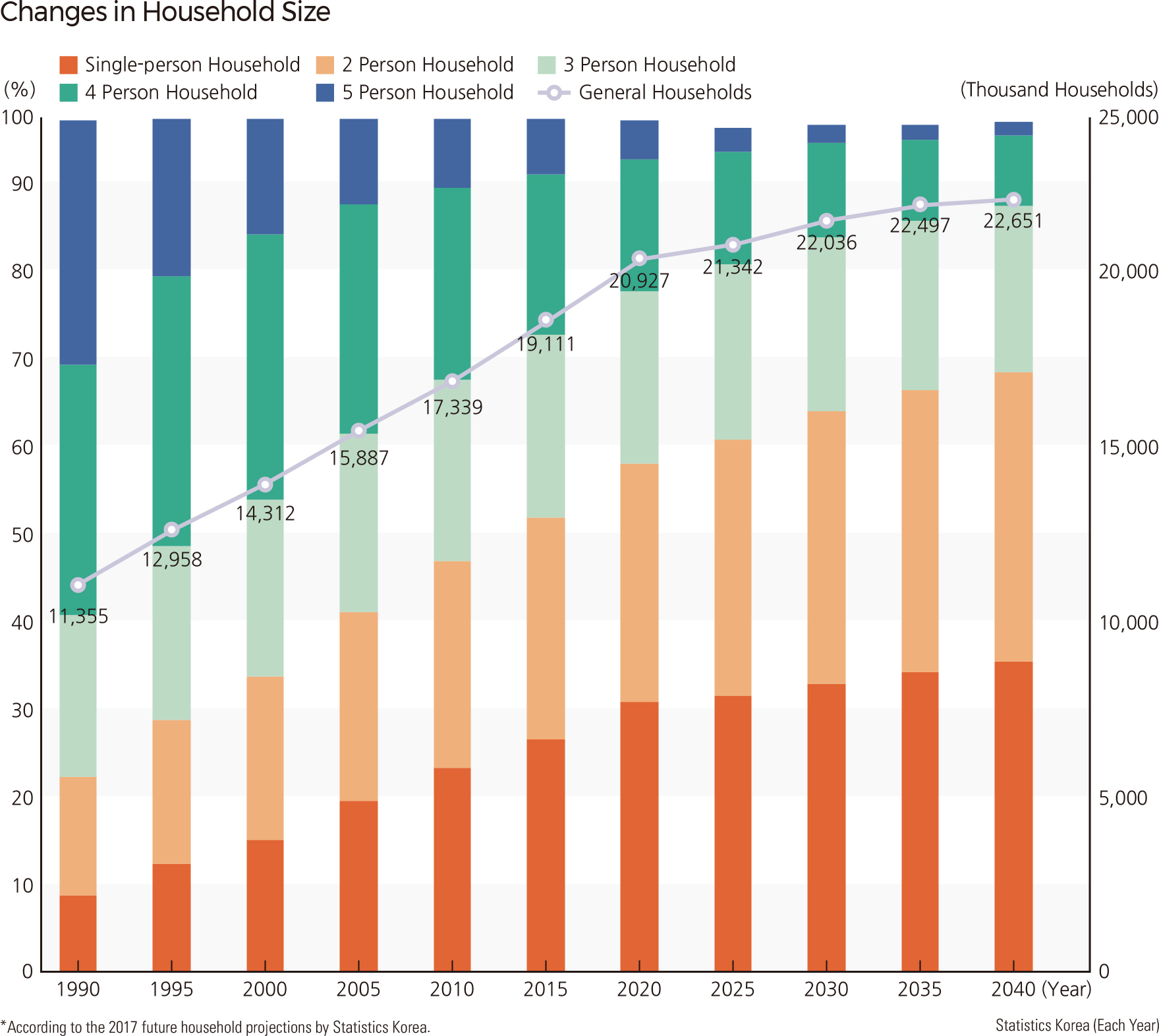English III 2021
The increase of single-person households is a worldwide phenomenon, occurring not only in Korea but also in developed and developing countries. In Korea, the number of single-person households has been increasing very rapidly. The proportion of single-person households increased rapidly from 9.0 percent in 1990 to 31.7 percent in 2020. Single-person households had the highest proportion among all types of households, accounting for 27.2 percent in 2015, and the proportion is expected to reach 36.4 percent by 2040. As of 2020, the proportion of single-person households was over 30 percent in all provinces and metropolitan cities, excluding Incheon, Ulsan, and Gyeonggi-do. In 2040, the proportion of single-person households is expected to reach 40 percent in Daejeon, Gangwon-do, and Chungcheongnam-do. As of 2020, regions with a high proportion of single-person households were metropolitan cities where many young adults in their 20s and 30s resided, such as Kwanak-gu, Jongro-gu, and Geumcheon-gu in Seoul, Jung-gu in Busan, and Nam-gu in Daegu; island areas where the proportion of men was high, such as Ulleung-gun in Gyeongsangbuk-do and Ongjin-gun in Incheon; and rural areas where many elderly single women resided. On the other hand, the regions with a lower proportion of single-person households were Gwacheon-si, Namyangju-si, Uiwang-si, Yongin-si, Gwangmyeong-si, Anyang-si, and Gimpo-si in Gyeonggi-do and Gyeryong-si in Chungcheongnam-do, where extensive residential land development took place in the Seoul Metropolitan Area. Single-person households show various distributions by gender, age, and marital status. As of 2020, single-person households have more men in their 60s and younger and more women in their 70s and older. As a whole, the proportion of women (50.3%) is slightly higher than that of men (49.7%). By age, those in their 20s or younger have the most, followed by those in their 70s or older, 30s, 50s, 60s, and 40s. By marital status, unmarried is the most common, followed by bereaved, divorced, and married. Single-person households in their 30s or younger are mainly distributed in cities, while elderly bereaved single-person households are mainly distributed in rural areas. In addition, the sex ratio of single-person households varies greatly depending on the characteristics of the region.
|





